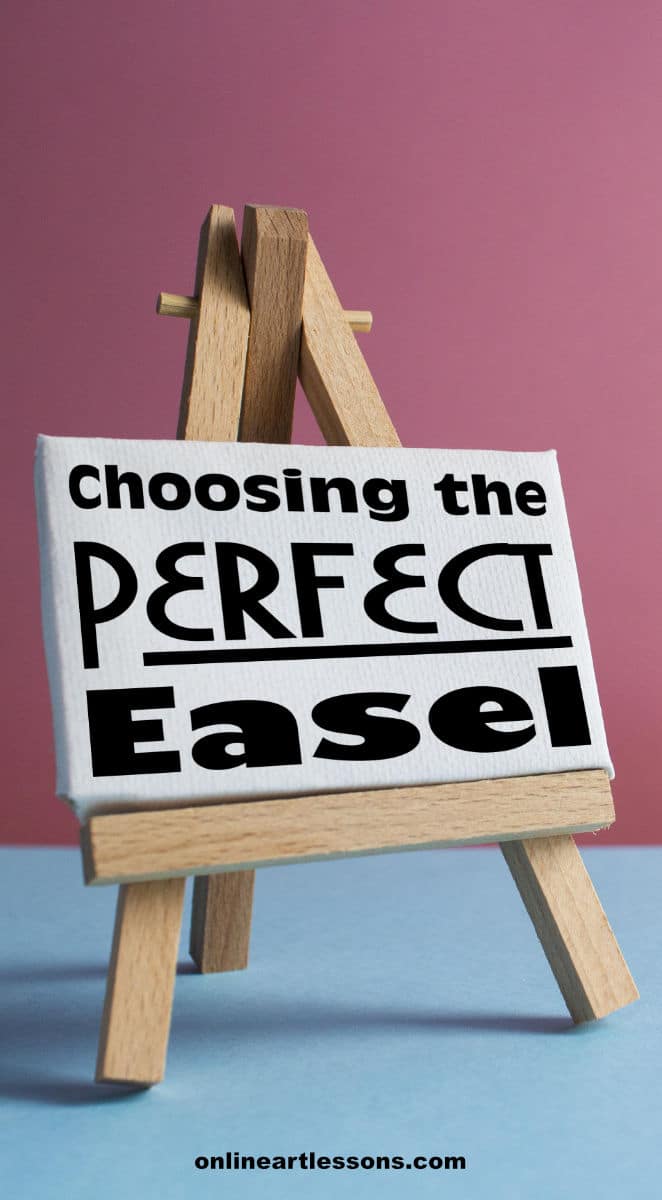If you are looking at buying an easel you’ve come to the right place! Maybe you’re somewhat overwhelmed by the choice of easels on offer or you are planning to embark on a new painting project and are wondering which easel will be right for you. Luckily, we’ve put together a comprehensive guide to easels to help you through the decision making process!
The Four W’s
The most important thing to remember when you’re choosing an easel are the 4 W’s:
Why do you need an easel?
Where will you be painting?
When will you need to use it?
What is your painting style?
Your answers to these four questions will help you to narrow down what kind of easel you should purchase. Read on for more details on answering each of the 4 W’s and more details on easels of all shapes and sizes.
Why Use an Easel?
There is a whole range of reasons why you might want to consider using an easel. When you try to paint on a table or other hard surface, it is common to find yourself bending forward and leaning over to see your work. For detailed pieces, this can quickly lead to back and neck pain from staying in a hunched position for too long. An easel allows you to paint with the work directly in front of you, keeping your eye line directly in front of you and your head and neck aligned with your torso. This takes a lot of the strain of painting out of your neck and gives your body a rest.
Working with the canvas facing you as opposed to lying flat on the table also ensure that you see the artwork in the correct perspective. With the artwork lying flat it is very easy to get the perspective wrong.
Another useful aspect of easels is the greater range of movement they can give you. Your work is displayed directly in front of you so you can stand back and move from side to side far more easily than if you were working on a table. It also helps you to follow the light, without having to worry about you casting a shadow on your painting. Whether you are painting outside or in a studio, you can angle your easel to give you the best lighting for your piece.
On the more practical side of things, easels also free up space on your tables or workspace for other materials. Instead of laying your painting down flat, you can store it vertically in a corner of the room. This leaves your workstation clear for paints, sources of inspiration, or the rest of the family if you are working on the dining table!
When an Easel Isn’t Necessary
Of course, not every artist needs to use an easel. If you are more of an occasional painter who enjoys making simple, quick sketches, you might not need an easel. You can get away with just painting flat on your table or on a hard surface, even balancing the sketchpad / board on your knees!
The same is also true for the artists who prefer to use a sketchbook over canvas. There’s not much point in trying to balance a sketchbook on an easel and it sort of defeats the purpose! The beauty of using a sketchbook is that you can jot down quick sketches and miniature artworks whilst you’re out and about, without the need for too much equipment. In these instances, I’d say to forget about an easel, unless you intend to translate your sketches into bigger artworks in the future.
Choosing the Right Easel
If you are sure that an easel is right for your needs, let’s move on to the nitty-gritty – choosing the perfect easel!
The right easel for you will depend on a variety of different factors.
Where Will You Be Painting?
– Indoors
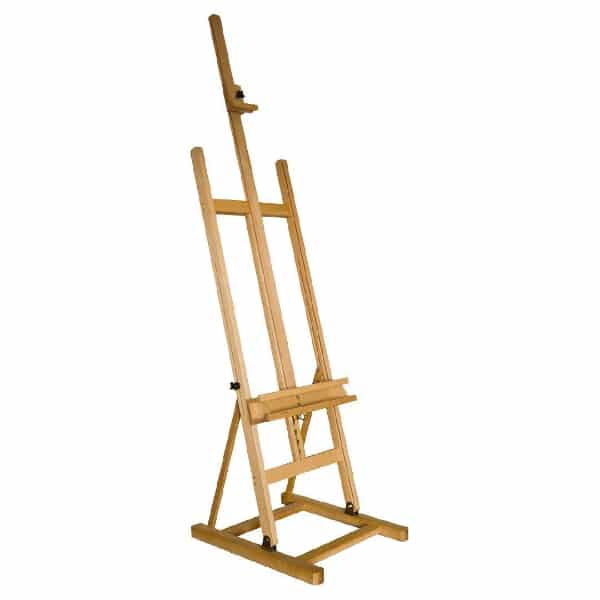
If you prefer to paint at home or in a studio, your easel choices will largely depend on the amount of space you have. If your studio is large enough to keep your easels out or on display, you don’t need to worry too much about it being easy to move around. In these instances, you might like a Studio H-Frame Easel. These are heavier and less maneuverable than other easels but they’re also much sturdier. You can also find models that have wheels so they can be moved around the room.
On the other hand, if you are painting in a room of the house that is also used by the rest of the family, it’s a good idea to look out for designs that can be taken down and put up quickly with minimal fuss. Studio A-Frame Easels are much lighter than H-Frame Easels and they fold flat so they’re easier to store in a busy family home.
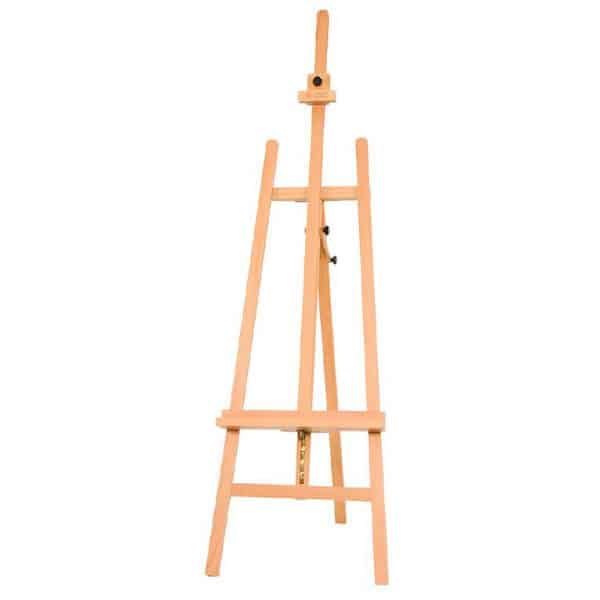
– Outdoors
If you are a landscape painter or just like to be in the fresh air, you will most likely be painting outdoors more often than painting in a studio. In that case, you need an easel that you can take with you on your journeys, one that is easily transportable, simple to put up, and good at balancing on uneven surfaces.
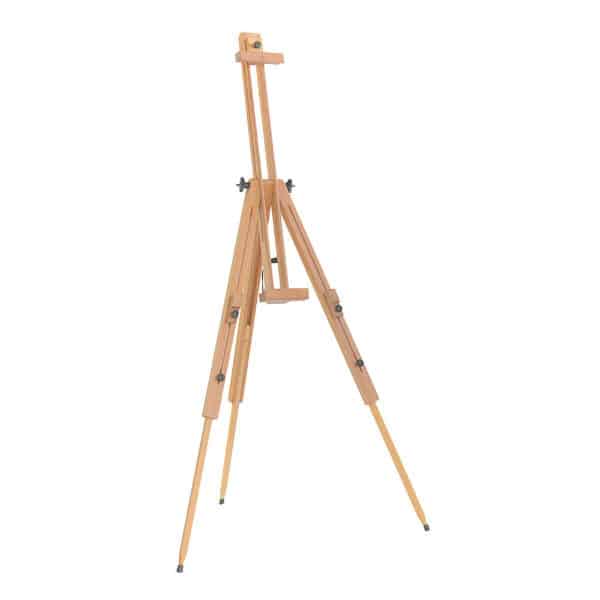
This is where a Field Easel would be most appropriate as they’re specially designed for outdoor painting, made of either wood or aluminum. Field Easels are smaller, lighter and better for traveling long distances, especially if you choose a design that folds up into small, neat bundle. A lightweight, adjustable easel with telescopic legs is especially useful so you can adjust it to stand steady on uneven ground.
Alternatively, a French or Box Easel is also a good choice if you’re painting outdoors. Box Easels are heavier than Field Easels so they’re more appropriate for travelling shorter distances. However, Box Easels are really nice because they form their own self-contained carry case, including all your paints, palette and brushes.
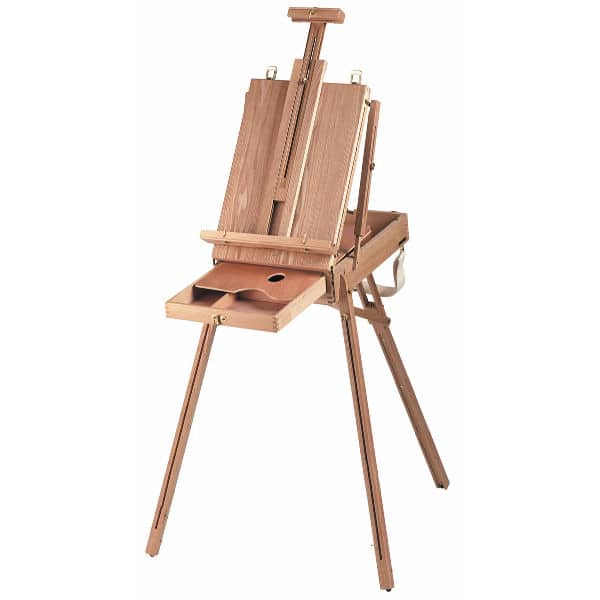
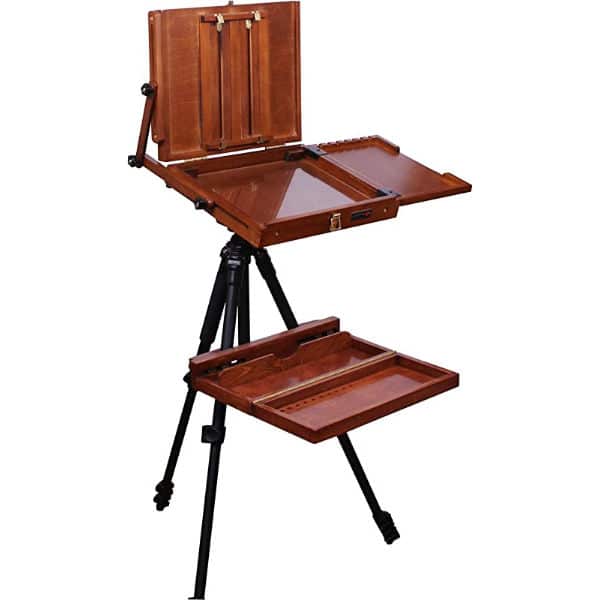
Then there is a “new” type of easel that is very popular with en plein air artists. It is a combination between the Field and French Easels.
It is called a Pochade Easel, pronounced poshard, and gives you the portability of a field easel while still have space for your palette as well as some paints and brushes.
There are some very clever designs out there so if you are interested in one, shop around as each design has it’s own unique advantages.
When Will You Use Your Easel?
The other factor to consider is when you’ll be using your easel. There are different easels that are better suited to different activities, such as life drawing and observational work.
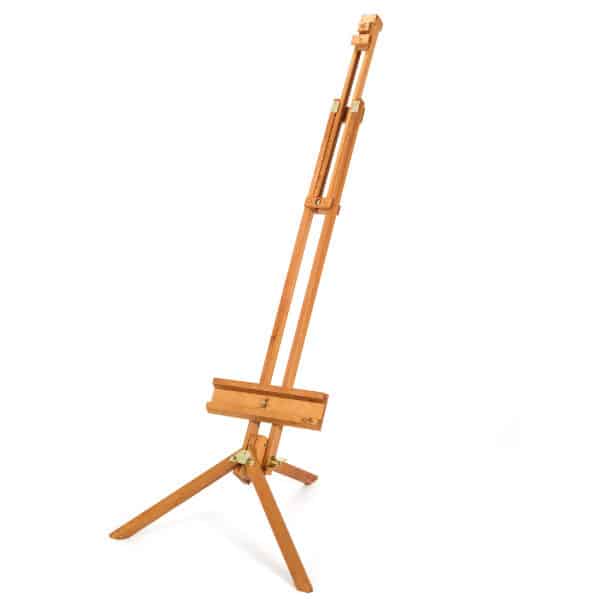
In these contexts, you might be limited on space as you’ll probably be painting next to other people. With this in mind, it’s best to look for easels that are narrow and easy to position, like a Studio Radial Easel, which has only three legs. This model is less stable than other studio easels but it is more affordable and easy to fold away.
Similarly, if you’re going to be taking art classes or will be carrying your easel between art college and home, you’ll want to opt for an easel that’s light enough to carry with you. You don’t want to be taking an H-Frame easel on the subway! One of the lightest options for standing easels is the Single Mast Easel, which is designed to fold up completely flat. This easel is cheap and ideal if you’re living in an apartment and tight on space. Once again, it’s not as sturdy as other designs though so that’s something to bear in mind.
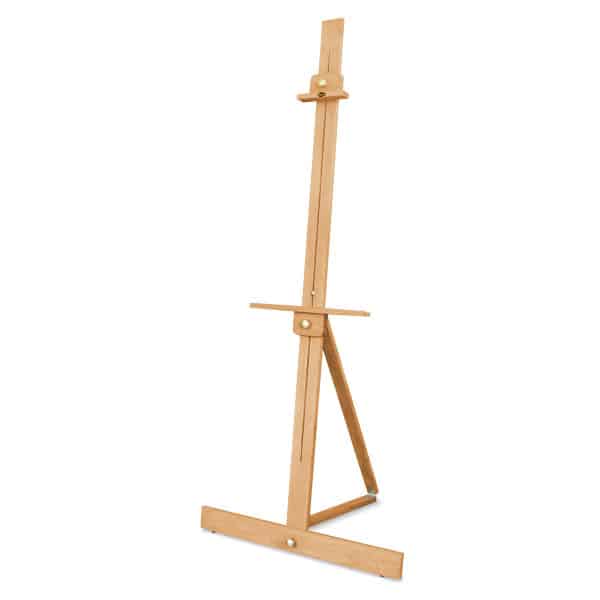
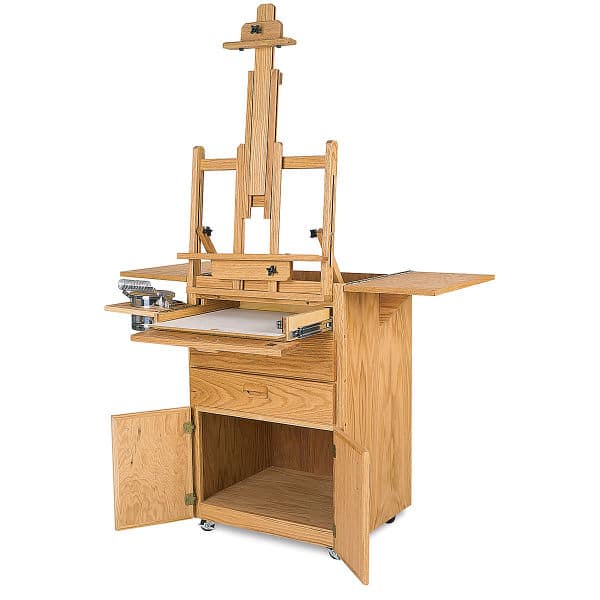
If you would like to have an easel but plan to only use it occasionally, or you don’t want the clutter or having one in the corner of your home, you could consider buying a Taboret Easel or a Painting Station. These easels have the appearance of a cupboard or set of drawers with a fold out easel at the top. When the canvas support is folded away, it is barely recognizable as an easel and has the added benefit of being a discrete storage space for art supplies too.
What’s Your Painting Style?
– Painting Position
Last, but not least, we have our ‘What’. Answering the question of ‘what is your painting style?’ will help you arrive at the final conclusion of which easel is right for you! For this section, we need to go into your preferred painting position, preferred canvas size and the medium you use most often.
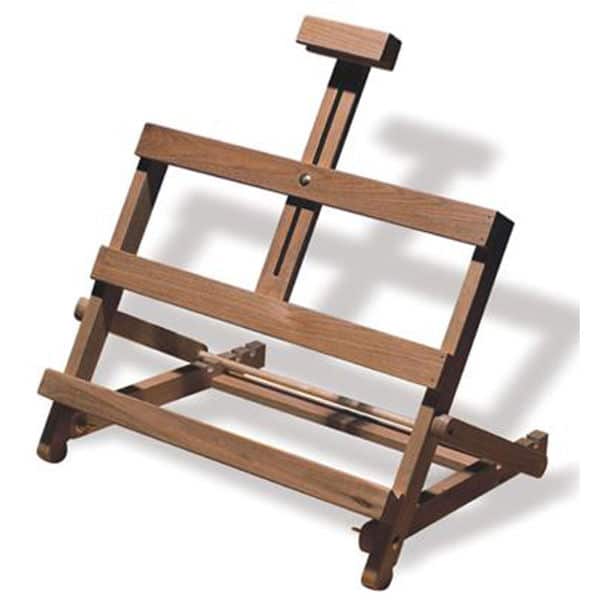
So far we’ve only discussed standing easels but there are also plenty of easels that are specially designed to be used whilst sitting down. This includes Table Easels, like Pochade Boxes, Tripod Table Easels, and H-Frame Table Easels. These easels are all suitable for smaller scale works, with the H-Frame being the most robust.
If you like to paint in a seated position, you could also opt for a freestanding seated easel like a Donkey Easel. This kind of easel is designed as a bench seat with the canvas support at one end. Often you will have a drawer or compartment at the other end of the bench for conveniently storing brushes and paints.
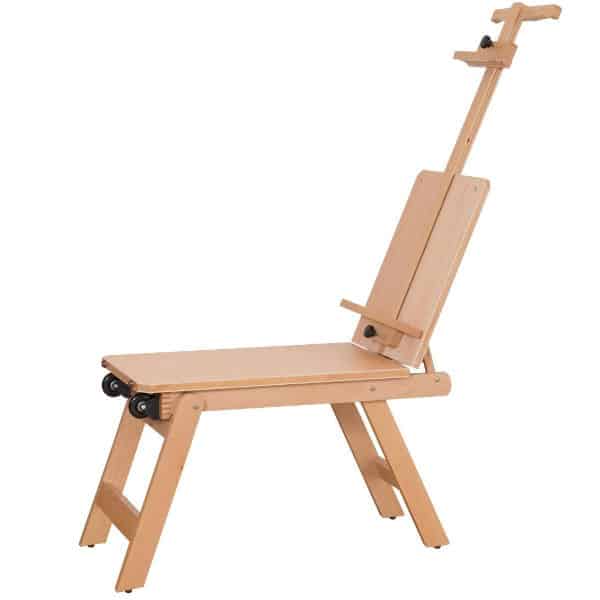
Happily, there are designs that allow you to alternate between sitting and standing too! If you’d like this option, you might choose a Crank Easel that allows you to adjust the height of your canvas holder efficiently using a crank handle.
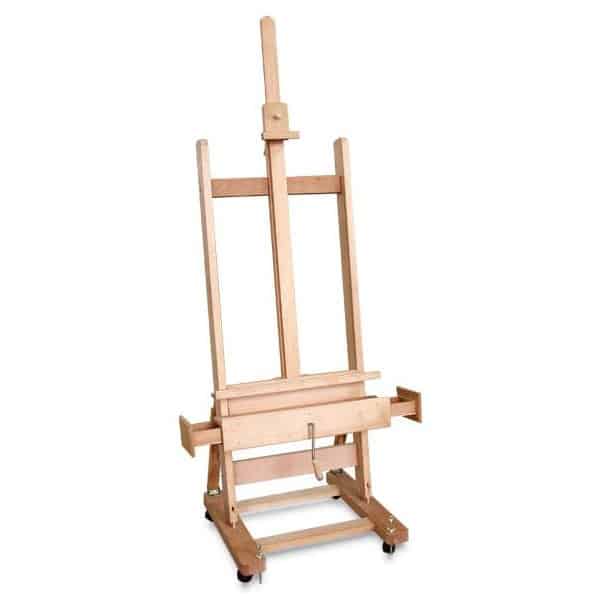
– Size
As well as considering the position you prefer to paint in – seated or standing – it’s also a good idea to think about the size of the artworks you like to produce. The size of your canvas will determine the size of the easel you will need.
If you’re planning to just focus on small canvasses, you can get away with a smaller table easel or a lightweight standing easel. Conversely, if you plan to make enormous artworks, you might need a sturdier easel to support your heavier canvas. It can be helpful to have one that’s easily adjustable so that you can move it up and down as you work on different areas of the piece.
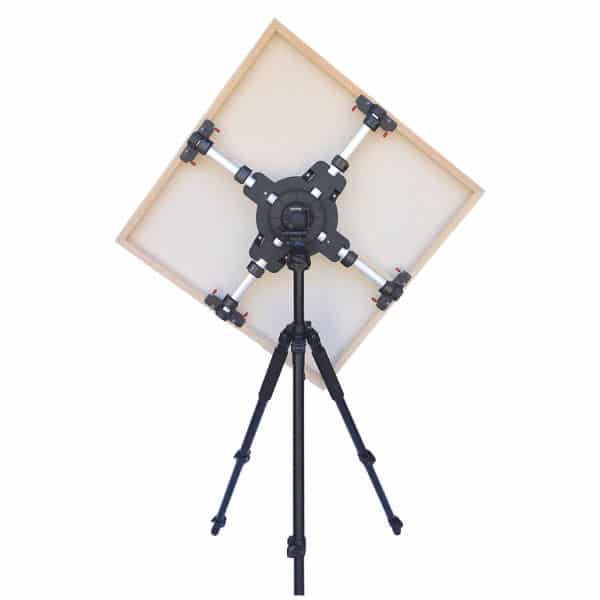
If you like to work on paintings that require lots of precise detail then you may find yourself turning the canvas often so that you can paint detail lines more comfortably.
In this case the Artristic Rotating Easel may be just what you are looking for.
Your canvas clamps onto the easel. You can then rotate or tilt your canvas to any angle.
Generally, there are no concrete rules for easels and canvas dimensions. Many lightweight easels are capable of supporting large canvasses provided you adjust them correctly. Remember that if you’re planning to use watercolors or painting on a sheet of paper rather than a canvas, you will need to tape it to a board – this will be the equivalent of your table. The dimensions of your easel will need to be able to accommodate the size of the board, not the size of the paper.
– Medium
Though your medium shouldn’t have too much of an effect on your easel, there are some examples where your choice of easel will make a difference.
If you need to apply varnish to your painting, for instance, you might prefer to have an easel that can lay flat to avoid drips. If you will be using pastels, having an easel that tips slightly forward can be really helpful as it allows the dust to fall without staining other areas of your work. The same is also true for painting outdoors – having an upright or tilted easel makes it less likely that dust or sand will settle on your wet paints.
Think about how many art materials you tend to use and where you’ll store them too. If you’re going to be painting outdoors, you might like to choose a Box Easel that provides a built in storage space. You could also look out for easels with shelves or drawers.
Wrapped up in your choice of medium is the way you paint – if you know that you paint especially vigorously or aggressively then you might need to factor that into your easel choice! Opt for an easel that can withstand being prodded and scrubbed and won’t end up in a heap on the floor! An upright easel can give you more freedom to move in broad, sweeping strokes compared to a table easel which requires more restricted movement.
An easel also doesn’t have to cost you a lot of money. Many artists, especially abstract artists make their own wall easel. A wall easel is essentially just timber lengths which are screwed into the wall. Then at regular intervals, say every 6 inches, you add a protruding screw onto which you can hang your painting.
You could also drill holes every 6 inches. You then place a dowel stick into the correct holes onto which you rest your canvas.
In the video above you can see how an artist quickly constructs a wall easel.
A Summary Of Choosing the Perfect Easel
It’s now easier than ever to find and buy easels, either online or from your local art store. There seems to be an easel for every situation, giving us an amazing amount of choice. However, this can also make buying the easel you need quite confusing.
If you’re feeling overwhelmed by all the options on offer, remember your 4 W’s:
Why do you want an easel?
Where will you be painting?
When will you need to use it?
What is your painting style?
Stick to these questions and finding the right easel for you should be a breeze!
Pin Me
